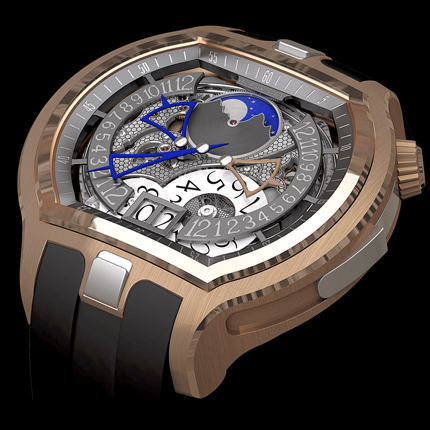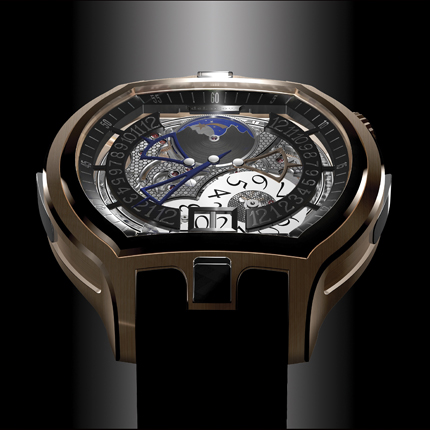
Birepetition
Power reserve: 50 h, 18000 vph
THE BIREPETITION
In an age when electricity was unknown and luminous hands were not yet invented, it was useful to hear the time instead of searching in the dark. The minute repeater is a complex and entirely mechanical system which strikes only on demand, the hours, quarters and minutes indicated by the hands.
It features two differently sized hammers striking gongs to produce contrasting sonorities and vibratos.
The world may never have revelled in the delights of the repeater watch had history followed a course of logic, rather than a the fascination for the mechanical wonder that is the repeating watch movement.
Following in the footstep of great watchmakers deLaCour presents their first minute repeater: the Birepetition. This timekeeper presents an exceptional and never seen before feature, a striking mechanism not only for one but two time zones. Having collaborated with Christophe Claret in the past on models such as the Bitourbillon, deLaCour chief designer Pierre Koukjian has joined forces once more with this complication specialist to create a world premier.
The patented calibre, DC288 (protected under patent EP 1 770 453) enables a double time zone reading, a retrograde hand placed at 9 O'clock indicates the home time whilst the Greenwich Mean time is displayed by a second retrograde hand placed at 3 O'clock. A third concentric hand is used to indicate the minutes. The date is displayed through an aperture of two rotating disks for double digits. To complete the Birepetition's stunning dial, a star shoots across the moon phase display every six minutes. The mechanism strikes the hours, quarters and minutes on demand, on gongs of low and high pitch specific to each time zone. These gongs are struck by two hammers (hours and minutes) that go round the movement twice in order to produce sonorities of greater resonance.
One hammer strikes the hours (the hammer differs according to the chosen time zone) whilst a second hammer strikes the minutes (different pitch to the hours but the same pitch for both time zones) and alternating strikes of these 2 hammers create the sound for the quarters: a sophisticated symphony reserved for the music of time.


